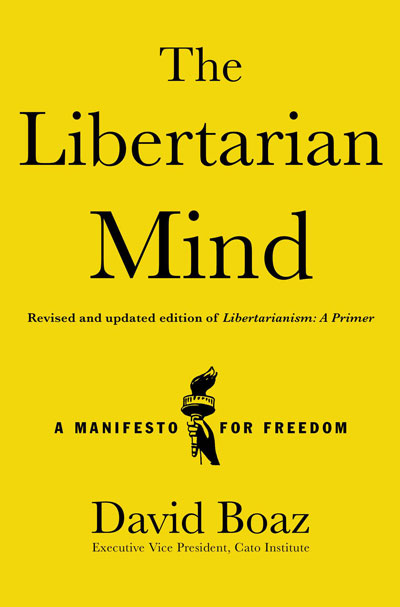‘Extreme’ Budget Cuts
As the days dwindle down to a precious few before a Shutdown, some Republicans are still insisting on $61 billion in budget cuts, while others are offering to compromise at $33 billion or $40 billion.
Sen. Charles Schumer, the third-ranking Democrat in the Senate, tells his colleagues to call the proposed Republican budget cuts "extreme." And he's certainly taking his own advice. But just how extreme are the cuts, even at $61 billion?
Tad DeHaven and Cato's newspaper ad offer one perspective. Tad also noted the incredibly small Pentagon "cuts" that the Republicans unveiled and the way discretionary spending will keep growing. And here's what's happening with "mandatory programs" -- none of which are actually mandatory if Congress wants to change them.
Jacob Sullum of Reason summarizes:
The cuts represent less than 2 percent of the total budget, less than 4 percent of the deficit, and less than 5 percent of discretionary spending, which rose in real terms by 75 percent from 2000 to 2010 and by about 9 percent in each of the last two fiscal years.Maybe the figure at the right will help. It shows the House-passed $61 billion budget cut in relation to the past decade's rapid rise in federal spending. In fiscal year 2001, which ended in September 2001 but was mostly set in place before President Bush took office, the federal government spent $1,863 billion. After seven years of Bush and a Republican Congress, spending was more than a trillion dollars higher -- $2,983 billion in FY2008. Then the financial crisis, TARP, the stimulus, and the omnibus spending bill came along, and FY2011 spending is estimated at $3,819 billion -- $836 billion more than just three years earlier, and $1,956 billion more than when Bush took office a decade ago. So a $61 billion cut is a lot of money anywhere except Washington. In Washington, it's less 2 percent of the budget. It's less than 10 percent of the three-year spending increase. It's one-sixth of this year's spending increase, the increase from 2010 to 2011. The figure shows what that "extreme" cut looks like compared to the soaring federal budget.
Posted on April 6, 2011 Posted to Cato@Liberty
Bias at NPR and PBS?
In my Britannica Blog column today I look at some brand-new examples of what might seem to be liberal bias at NPR and PBS:
NPR’s Diane Rehm Show devoted an hour to Sen. Bernie Sanders, the independent socialist from Vermont, talking about his new book The Speech. But it looks like Diane has not interviewed Sen. Rand Paul, the constitutional conservative from Kentucky, about his new book The Tea Party Goes to Washington, even though it’s selling better than Sanders’s book. It’s pretty clear to book publicists that it’s much easier to get a liberal author on the Diane Rehm Show than a conservative or libertarian author. Meanwhile, this week PBS is featuring the latest in its program Journey to Planet Earth, this episode featuring “environmental visionary Lester Brown,” the long-time president of the Worldwatch Institute. The episode, “Plan B: Mobilizing To Save Civilization,” “delivers a clear and unflinching message – either confront the realities of climate change or suffer the consequences of lost civilizations and failed political states.” Matt Damon hosts. But Lester Brown’s decades-long predictions about environmental disasters have been wrong more often than the 5.9 million NCAA brackets filled out on ESPN. See this review from 1999 or this one from 2000 or this one from 2009. Meanwhile, a PBS documentary featuring the ideas of Julian Simon, who challenged doomsday orthodoxy and notably got things right? Don’t bet on it.For more examples and why it matters, read the whole thing.
Posted on April 4, 2011 Posted to Cato@Liberty



